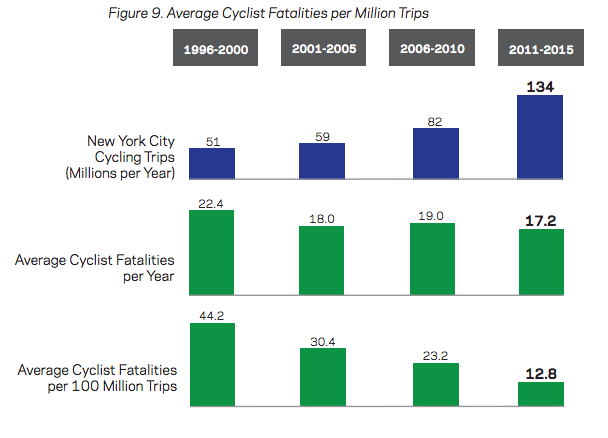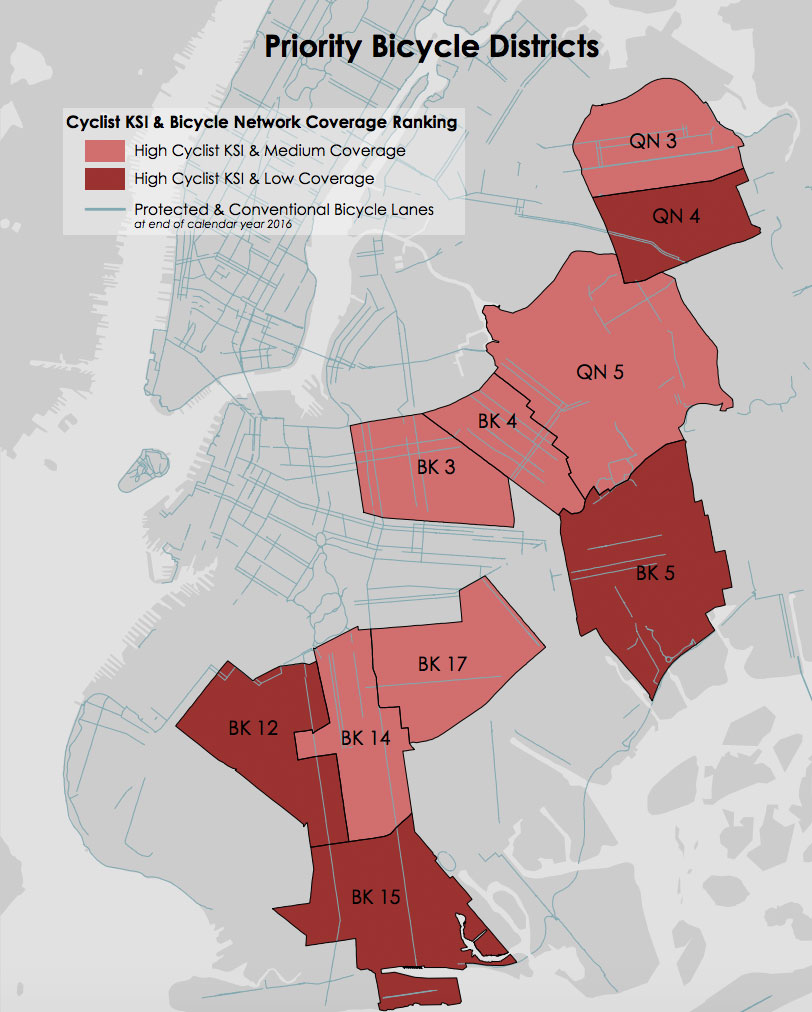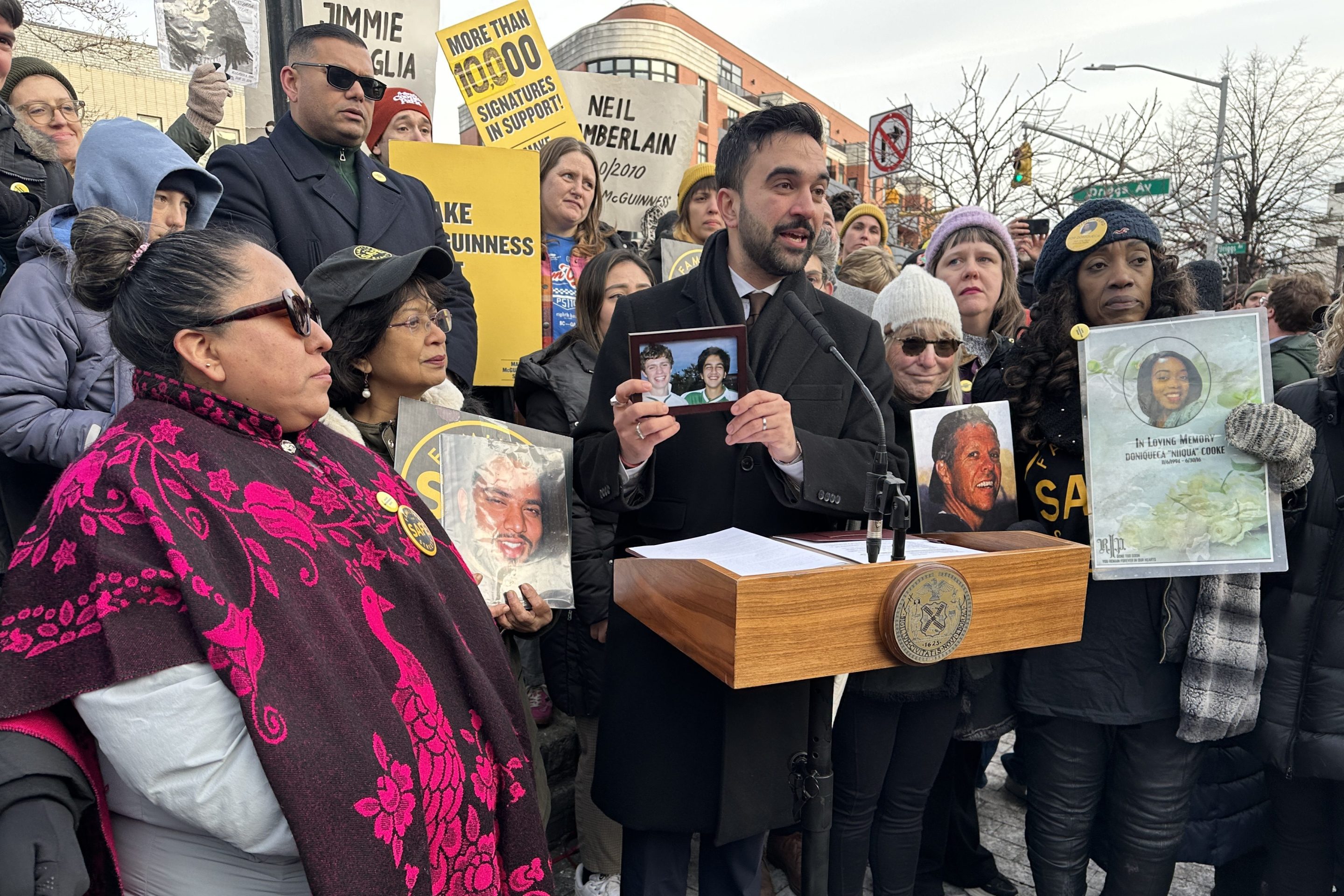Cycling in NYC is much safer than it was a generation ago, when the city had only a bare-bones bicycle network, but there's still a lot of ground to cover before cycling is as safe as it should be for most New Yorkers. In a new report from DOT, the Department of Health, and NYPD, the city takes stock of its progress on bike safety and lays out its next steps [PDF].
In the last decade, as bike infrastructure has proliferated, the number of bicycle trips in the city increased 150 percent, according to DOT, compared to a citywide population increase of just 4 percent. At the same time, the number of cyclist fatalities has declined, meaning cycling has grown safer as it becomes more common.
Nothing illustrates the safety-in-numbers effect in NYC better than the launch of Citi Bike. In the year after the program launched, bike trips surged while cyclist injuries and fatalities fell 17 percent within the bike-share service area.
"It's a real chicken and egg," Transportation Commissioner Polly Trottenberg said at a press conference this afternoon. "The rate of cyclist fatalities and severe injuries has really dropped as our [cycling] numbers have risen."

Still, the bike network is far from complete. There are gaps in the existing network, and much of the city lacks access to safe bike infrastructure.
DOT says it will continue to roll out 10 miles of protected bike lanes and 40 miles of unprotected bike lanes each year. That does not signify an increase compared to current implementation rates. But the agency does plan to focus on 10 community boards -- three in Queens, seven in Brooklyn -- with high numbers of cyclist injuries and fatalities (see top graphic).
This should bring bike infrastructure to several neighborhoods that lack it today. By 2022, DOT aims for 90 percent of New Yorkers to live within a quarter-mile of a bike lane, up from 80 percent currently.
Noting that 89 percent of cyclist deaths and severe injuries occur at intersections, DOT is examining how to improve intersection design for cycling and will be putting out recommendations early next year.
The report also says the city will expand bike counts to capture cycling activity farther out from the city center, adjust its management of curb access to prevent conflicts between cyclists and deliveries, and pursue legislation to require side guards on trucks.
Advocates commended the report while urging the city to accelerate implementation of the most effective tool at its disposal: protected bike lanes.
"[The report] finds that interventions like protected bike lanes directly prevent the death and serious injury of New Yorkers while they ride bikes," said Transportation Alternatives Executive Director Paul Steely. "In the Vision Zero era, the City is beholden to the safety of New Yorkers, and has a mandate to act on this finding with urgency."






